A GIRL WALKS HOME ALONE AT NIGHT Explained

In the film A Girl Walks Home Alone at Night from 2014, the directorial debut of Ana Lily Amirpour, the world depicted seems like a sensual fairy tale for adults. Bad City, the film’s sole setting, is an environment corrupted by drugs, lawlessness, and prostitution.
In this city, an unknown, seemingly innocent creature wanders the streets—the titular A Girl Walks Home Alone at Night —played by Sheila Vand. She encounters a boy named Arash, played by Arash Marandi, with whom she forms a special bond. Their relationship becomes the foundation of the story, offering a glimpse into the lives of two lost individuals who find understanding in each other.
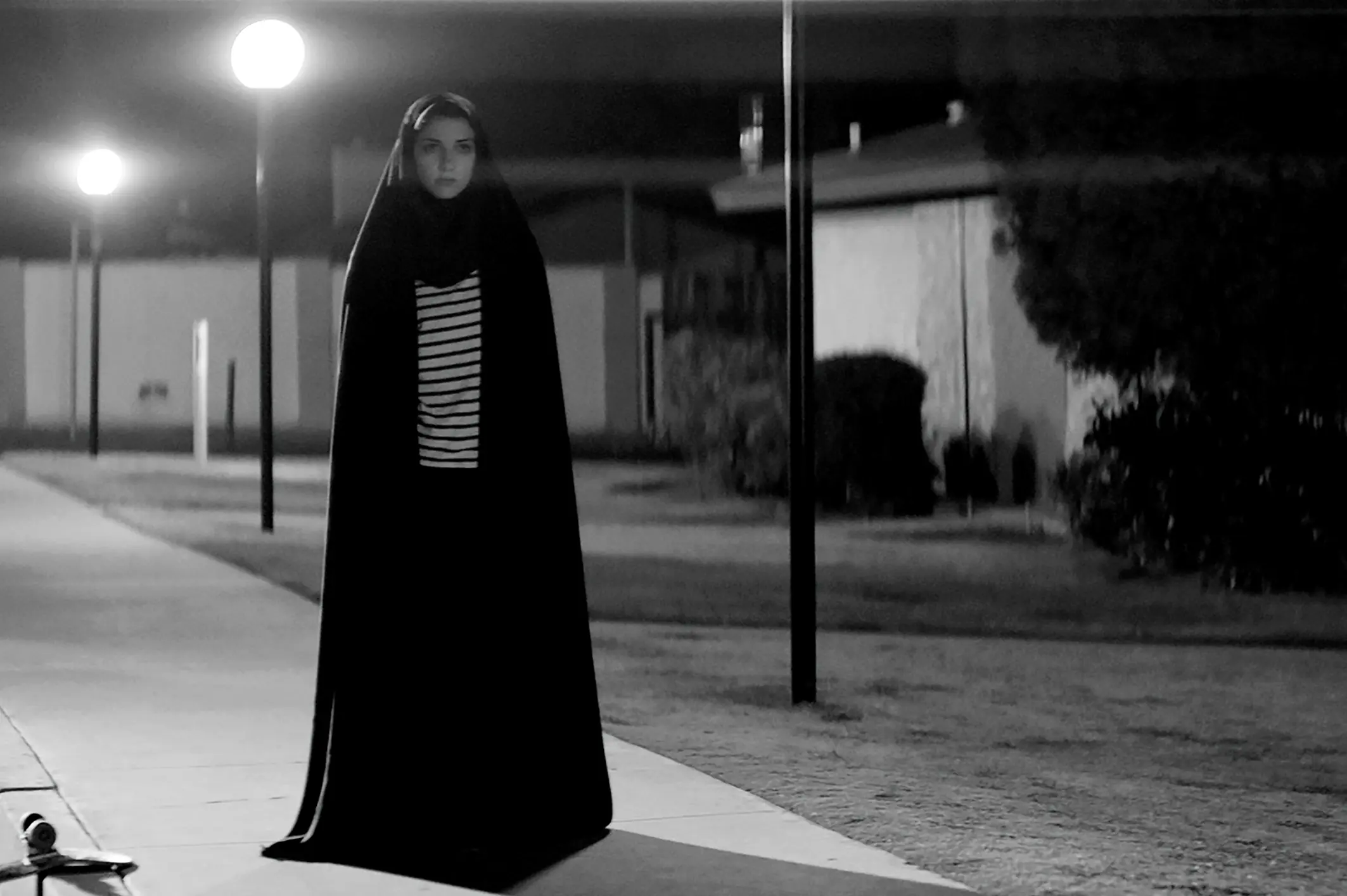
The story is told from the perspectives of the characters appearing on the screen. Often, the same scenes—resembling silent confrontations—constantly shift perspectives to compare how the two protagonists view each other. The calm on the screen is continually mixed with action. The camera, either standing still or slowly following the characters, captures scenes of calm or slow action, while handheld shots clearly indicate assaults, including action scenes or those with strong emotional undertones, such as the anxiety attacks of the main character’s father. A scene where Arash stands by a lamppost reveals his dream of freeing himself from the corrupt city and his sick father. This sad metaphor for the young man’s life is achieved through an overhead shot suggesting open space above him—he stood there for a long time, looking into it, hoping for a solution to his situation.

Amirpour treats the viewer as an intelligent companion, using ellipses, or thought shortcuts. These ambiguities allow the audience to engage in the action and infer what might have happened between scenes. After all, not everything needs to be presented on a platter, and this approach allows the viewer to participate in the narrative.
The dominant shot was a full shot—the characters’ location was known, and the surroundings seemed like a separate character in the story. The deserted city and the ever-operating factory were witnesses to the events and served as the backdrop to the story. The film’s dreamy and mysterious atmosphere is attributed to the cinematographer, Lyle Vincent. Thanks to him, the film’s pace slows, reaching the pinnacle of sensuality.
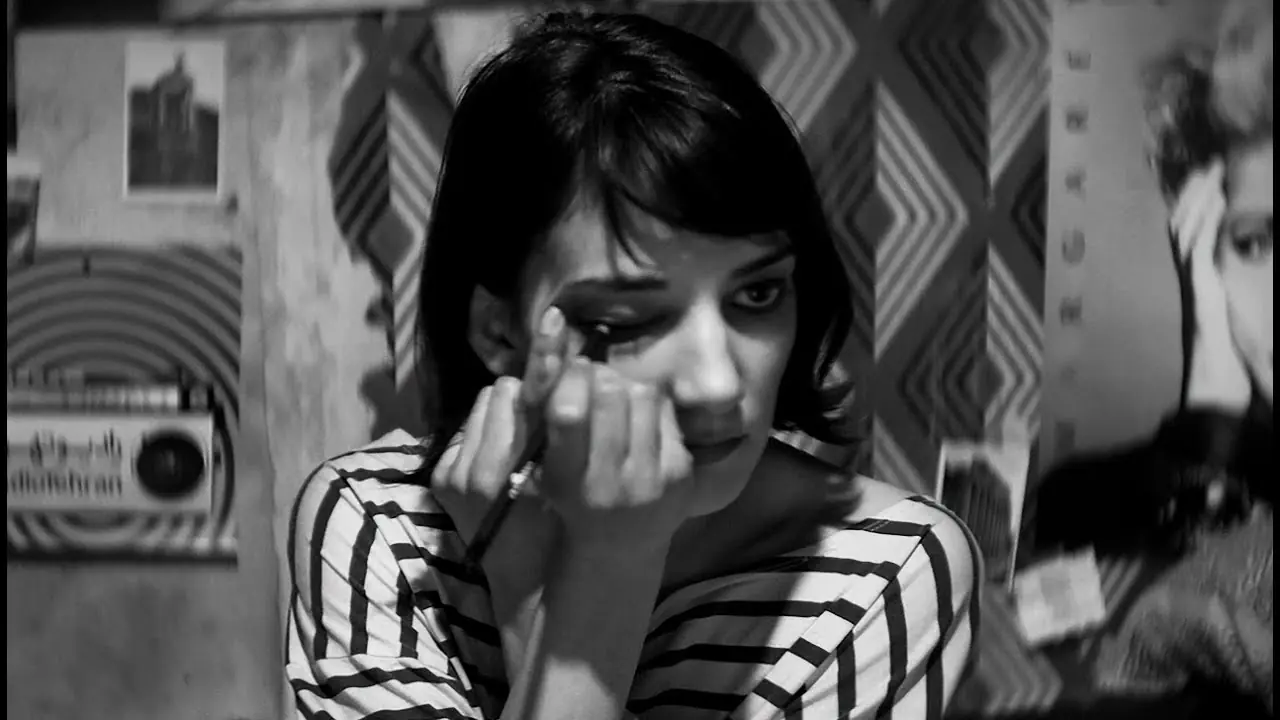
The director’s use of black-and-white cinematography, like passive shots, enhances the film’s oneiric character. This convention, besides the shots of the sleeping protagonist, is created by continuous close-ups and the “blurring” of both foreground and background. The black-and-white image requires special lighting selection and manipulation. Amirpour used everyday objects and urban spaces to achieve the desired contrast effect. A notable feature of the film was the placement of light sources, as in most scenes, the light shone from behind the characters. This method of showcasing (mainly bodies and faces) the characters resembles noir films, the American gangster cinema of the past century. The lack of standard lighting evoked feelings of unease and deepened the characters’ silent nature.
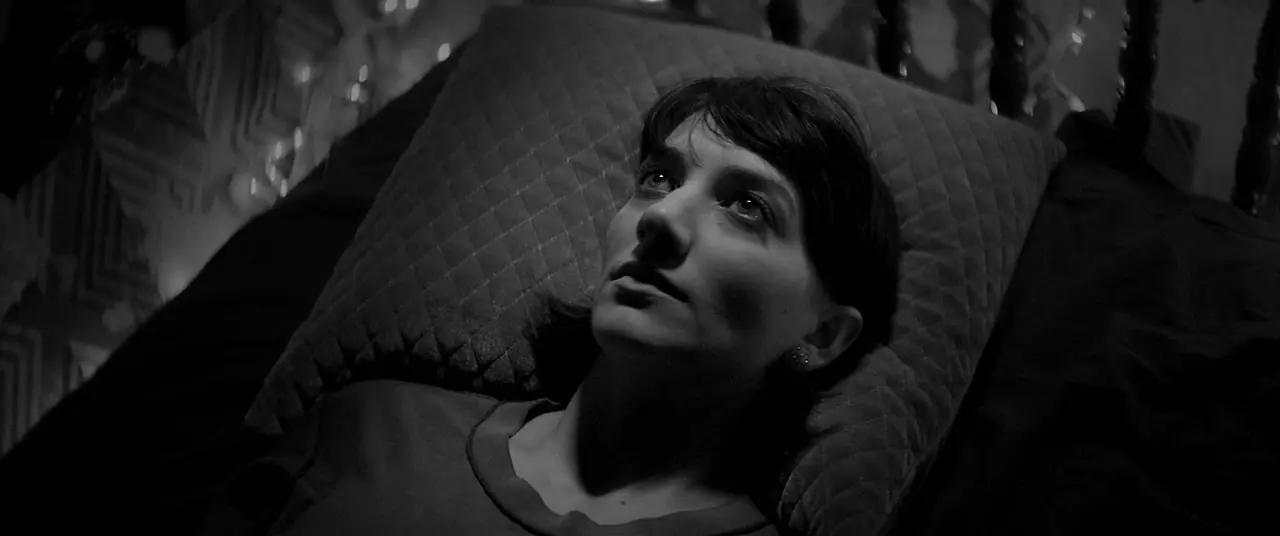
The film’s quiet convention is occasionally disrupted by city sounds and music, which appear during changes in the characters’ emotional states. An example of such a scene is Arash’s escape in his car just after recovering it from the dealer. The appearance of the soundtrack accelerated and simultaneously emphasized the action’s tempo. Attack scenes also had their accent in the form of rapid tapping, building tension and creating an atmosphere of horror.
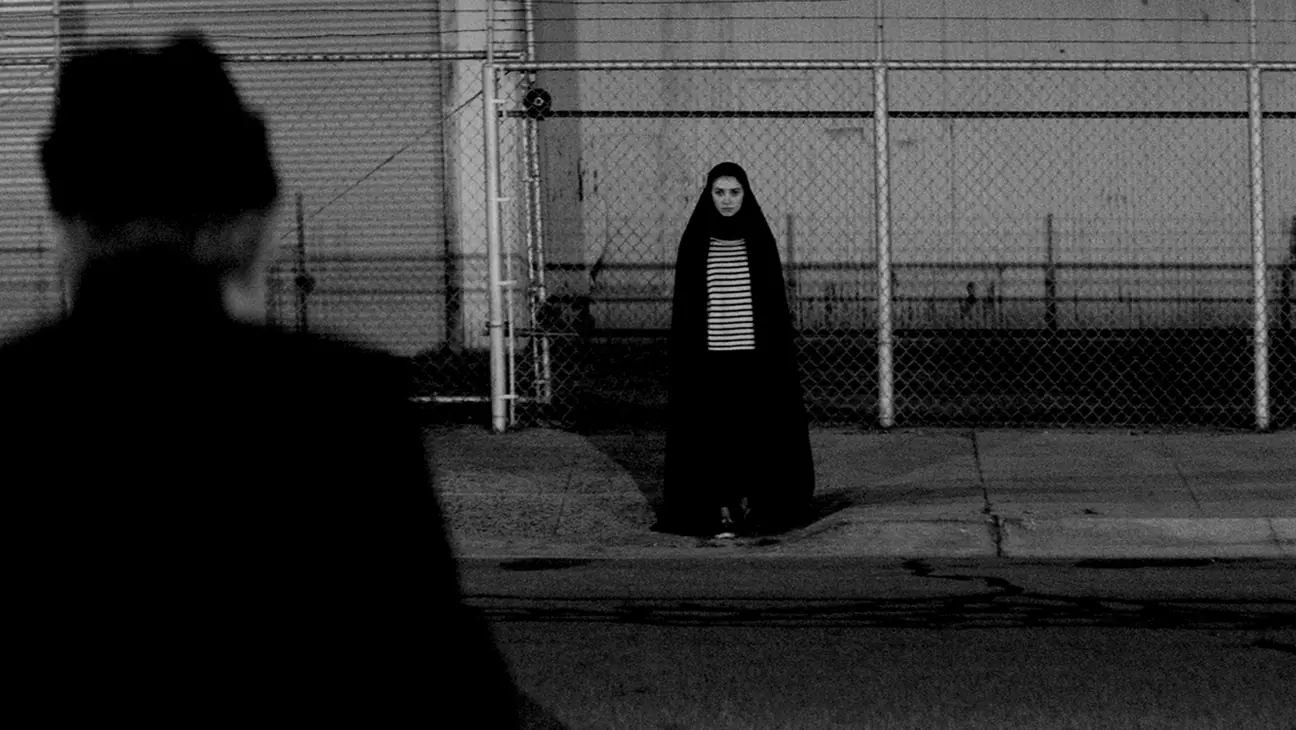
In Amirpour’s debut, the main advantage is the leading characters, who cannot be fully understood. Here again, a series of ambiguities allows for personal interpretations. Long and deep gazes were the tangible interaction between the characters. Limited dialogue gained value with every movement of the lips. Every spoken word mattered and did not cause narrative chaos. The tranquility on screen was soothing and drew the viewer in as events unfolded. The lack of obvious scenes allowed the director to create a film that was thought-provoking and unpredictable. Most of the film takes place at night, so the enigmatic nature of the plot, aside from arousing interest, also evoked unease. The key mystery is the titular character, the Girl—sad and lonely, traversing the urban landscape in search of… what exactly? What she was seeking (besides sustenance) remains only a suggestion by the author of the work—each viewer must find the answer to this question independently. The same applies to the final scene, which is an open ending. Amirpour, therefore, gains in moodiness but also encourages reflection—how might an unconventional story end? Certainly not in a banal way.

What Arash was seeking was escape. His liberation turned out to be the Girl, who, by eliminating all his worries (the dealer, his father, the city), simultaneously granted him permission to leave his previous life. He is a character with whom one can identify, as, like most, he is lost and trapped in the monotony of life from which it is not easy to break free. Another and the final character with whom identification is possible is Arash’s cat. It is a silent observer of the story. It is not given the opportunity to comment on or interfere with events. It remains a passive participant, like a viewer in front of a screen, entirely dependent on the leading pair of characters.

The oneiric atmosphere in the film resembles that of Park Chan-wook’s Stoker from 2013. The Girl and India are strong female personalities confined in their worlds. Their world was created by the loneliness beating in their hearts. India spent her days alone, while the Girl spent her nights—this made it so that for years, neither allowed outsiders to reach them. Their stories are interwoven with shots, mainly details, which seemingly had little significance for the plot. Their beauty drew attention and slowed the pace of the action.

In turn, Bad City, the Girl’s city, resembled that of Sin City (Robert Rodriguez and others) from 2005. Both cities, although architecturally different, were identical in terms of corruption. The streets were dominated by violence, prostitution, and drugs. Escaping from both was challenging—they attracted like a magnet.
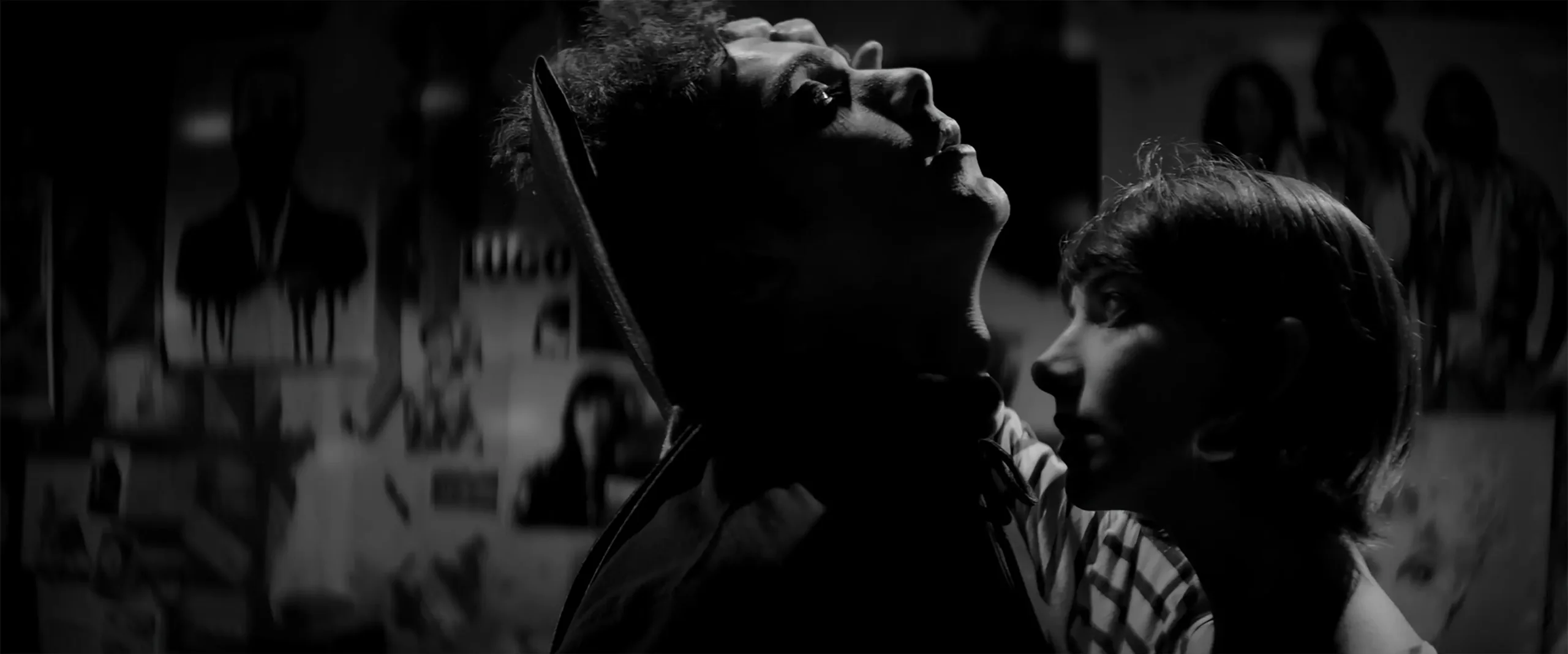
A Girl Walks Home Alone at Night is a subtle film depicting the pursuit of a goal, which is breaking free from the chains that are like an anchor in a society ruined by lawlessness. It is a story of finding a kindred spirit who, though different and misunderstood by others, becomes someone more. An unconventional take on the already exploited genre of horror and the theme of wonders. If you’ve seen many films, it’s worth seeing this one—a minimalist story of a vampire woman and a mortal, completely different from Hollywood productions. A captivating film that is hard to forget.
Written by Dominika Gołuchowska

